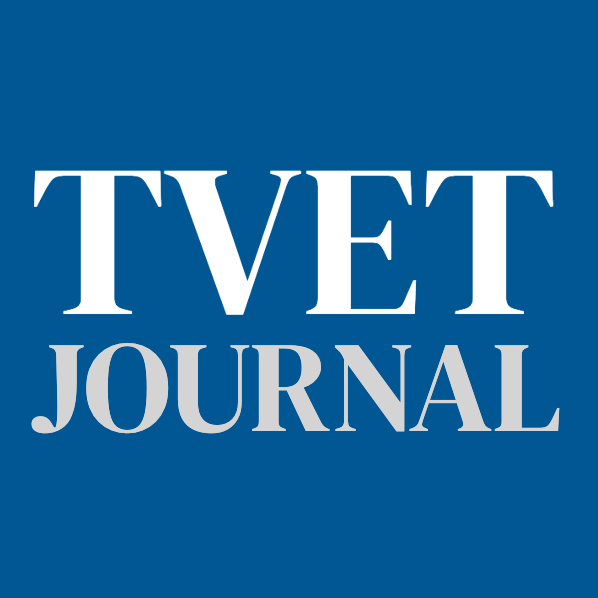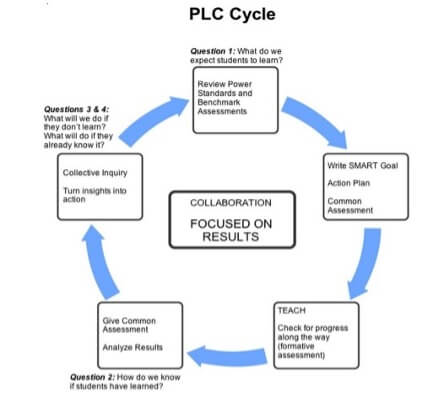Written by: Mohni Saif MPhil-ELM
Abstract:
Investigating the role of vocational teachers in professional learning communities is the objective of this study. It will examine the essential ideas that make it a significant aspect of economic growth, as well as the standard of education and instructors’ continuous professional growth. The research, however, is open to different policy ideas. This conceptual study intends to learn from different models and propose implications for Professional Learning Communities in favour of vocational education teachers by pointing out their roles in this regard.
Introduction:
This paper examines the economic contribution of instructors in professional learning communities for vocational education (Bolam et al., 2005, 53-65). Researchers have noted that teachers’ education and improving their skill set when faced with challenges leads to better efficiency in terms of students’ progress and determines what role can vocational teachers play toward learning communities. The existing paper focuses on reforms needed to foster economic growth by focusing on professional learning communities by utilising insights from PLC models (Holmes, 2013, #) (Le Cornu, 2008, 56-78).
Teachers are at the top of the hierarchy towards the development of students, their upgraded skills over time lead to quality education, thus producing students with skills that can benefit them in later stages of life. Vocational teachers’ development and how can they contribute to PLCs are determined by what they are feeding to society. The paper addresses the gap between the challenges faced by vocational education teachers and how the reforms are needed to make it practically implacable in underdeveloped countries as well. The paper covers attitudes like PLCs, development, education reforms, and teacher training. It is believed that economic growth is linked with the quality education of young minds, which later on paves the way to better industrial placement, resulting in the growth of the nation and a skilled labour force.
Problem Statement and Significance:
While the importance of PLC is known, there are different models being implemented across the world. They are applicable in developed countries where it is easy to take initiatives and implement them. Underdeveloped or third-world countries can benefit from it, but there are challenges that need to be addressed. The study aims at the role of instructors in professional learning communities that can promote long-term economic expansion in vocational education (Maria Bliuc et al., 2012, 12-19). This paper discusses different models and examines their methodologies, implementations, and challenges faced during the PLCs. The study will reflect the policy implications for empowering and upgrading vocational education teachers in lieu of Professional Learning Communities.
Research Question:
- What are the main roles of Vocational teachers to improve PLC?
- How can vocational teachers improve students’ learning through PLC?
- Are political instability and economic development linked with Professional Learning Communities?
Hypothesis:
- There will be a significant impact on the role of teachers and quality education in lieu of the economic progress of the country.
Keywords:
- PLC, Vocational Education, Quality education, Teacher’s role in the economy.
Limitations:
Limitations include socio-economic instability and geographical locations where the government cannot provide basic needs as PLC requires existing infrastructure aftermath of that is PLC.
Summary:
In lieu of the underlying chapter, we closely examine the responsibility of instructors in vocational education, and their role in economic progress considering various models and past studies. This also includes the objective and expected implications of the study with rational assumptions and geographical and time constraints.
Literature Review:
Vocational Education:
Earlier than a century, Huxley bemoaned, “It exceeds the wit of man, as far as I know, to establish a legal definition of technical education.” Clark forewarned Canada in 1895 and thirty years ago that “the non-universities would fail us if they grow merely as carbon copies of the past or as institutions that zig-zag with the opportunities of the present.” Their exciting new role in society depends on a solid self-concept. In terms of creating a stable identity for career training and education, I would argue that we have not made any progress.
This area of educational activities includes the study of technology and related sciences, as well as the learning of real-world competencies, attitudes, comprehension, and information relevant to careers in various spheres of economic and social life, (UNESCO 2014, Global). Education and training programmes that combine information (theoretical comprehension) possess practical skills, are developed for and frequently lead to a certain career or kind of employment (Aaron Benavot, 1983, 53-65)
The National Centre for Vocational Education Research defines it as post-compulsory education and training that provides students with information and skills necessary for employment, excluding degree- and higher-level programmes given by institutions of higher learning.. Programs that serve as the foundation for later vocational programmes are also included in VET (Moodie, 2006, #). Alternative titles that are used internationally include career and technical education, further education and training, technical and vocational education, and technical and vocational education and training (Bolam et al., 2005, 12)
Vocational education and training, sometimes known as VET or simply vocational training, focuses on developing information and skills for a certain career, occupation, or vocation that a student aims to pursue. A combination of formal education and on-the-job training is also referred to as vocational education. Vocational education can be undertaken in a school setting as a secondary or tertiary course of study, as an initial training programme while working, such as as an apprentice, or as a stand-alone endeavour.
Professional Learning Communities:
A collaborative group of educators known as a professional learning community, or PLC, strives to continuously improve in order to enhance student learning. To maintain consistency in students’ intellectual, social, and emotional learning, a PLC could be made up of educators from several topic areas, grade levels, and/or leadership levels. Student learning is given priority in an efficient professional learning community. To identify students’ learning requirements, the group’s educators collect data from a variety of sources, including formative assessments, yearend exams, and even student reflections.
Teachers can determine which teaching methods work best for raising student accomplishment and where there is room to close learning gaps (Winch, 2007, 42). PLC sets shared objectives.
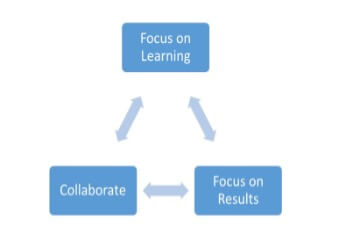
What should pupils learn? What proof will we have that students have picked up these skills? How can we help pupils who are falling behind in their academics? Additionally, PLC does have a strong culture of cooperation. Educators do not operate in silos to figure out how to assist pupils in meeting grade-level criteria. Instead, they collaborate on developing curriculum alignment across grade levels to support sustained student accomplishment; data collection and evaluation methodologies to better understand students’ specific needs; and insights into which teaching strategies are effective and which require improvement (Zakirova & Koletvinova, 2014, #).
PLC shares accountability for kids who are having trouble. PLC members do not distinguish between “your students” and “my students.” Instead, they strive to comprehend what strategies and aids “our pupils” need in order to succeed (Sue Kilpatrick et al., 2003, 55). The PLC teachers collaborate to closely monitor the development of challenging pupils and address their problem areas.
A Literature Review:
Vocational education can be undertaken in a school setting as a secondary or tertiary course of study, as an initial training programme while working, such as as an apprentice, or as a stand-alone endeavour. (Mouzakitis, 2010, #). However, there aren’t many comparative studies looking at how and why technical-vocational educational programmes became a separate branch of public education (Sameer Aowad Kassab Shdaifat1 & Al-Huson, 2020, #). What factors influenced, aided, or hindered the growth of vocational education across the world? A mix of economic, class-based, ideological, or other constraints led to the establishment of vocational education. (Sturko & GregsonA, 2008, #)
The formalisation and integration of specialised vocational courses and apprenticeship programmes for use in public schools, as well as the general growth and differentiation of secondary schooling, were the two educational developments that drove the institutionalisation of secondary vocational education. (V. O. Uwaifo & I. U. Uwaifo, 2018, 33-35) The “modern” stream in French lychees, “higher burgher” schools in Germany, and secondary “modern” schools in England all contributed to the separation of two sorts of schools for post-primary education in the 19th century: those emphasising traditional subjects like Latin, religion, and the classics, as well as those that place a strong focus on contemporary disciplines like physics, arithmetic, and modern foreign languages (Ringer, 2015).
Both types of secondary schools in Europe saw a considerable expansion as differentiation gained traction. Recent studies indicate that this development is due to a number of factors, including the increasing demand for skilled labour brought on by industrialization, traditional European elites who increasingly saw post-primary education as a way to certify their children’s proficiency and give them mobility for entry into high-status professions like the legislature, theism, medical science, and the like, and middle-class families who desired their kids to obtain advanced degrees for entry into the public sector. (vwg, n.d.). The construction of additional non-elite, vocational schools for children from working-class families was made possible by the expansion of higher “modern” schools. (V. O. Uwaifo & I. U. Uwaifo, 2009, 116).
Working-class adolescents received their formative education outside of the public school system until technical-vocational institutions were established. After completing many years of elementary schooling, working-class children sought apprenticeship training in artistic and professional skills when it was available, under the direction of a skilled professional or craftsman. (Moodie, 2006, 22). The nature of apprenticeship frameworks was distinct from that of schools; few were distinguished by class or degree of capability because there was very little focus on formal recognition and certification conferral. (Aaron Benavot, 1983, 12-16) Throughout the nineteenth century, the apprenticeship system’s authority and status were eroded. Policies to govern and standardise job training processes were established by agencies that promoted new, labour-intensive technologies. (Bolam et al., 2005, 44-67) Private enterprises, local governments, and industrial associations are all examples of such organisations that establish and fund “schools” that provide technical-vocational courses aimed at teaching young workers new skills and broadening their knowledge.
Cooley and Taylor provide detailed descriptions. Old apprenticeship systems were undermined and, in some cases, totally replaced by these new forms of education, which combined on-the-job learning and part-time classroom teaching. Various industrial and trade courses with educational components were also included in the education system at this time.
When vocational courses were first introduced into public schools, they were usually backed by powerful sponsors. On the one hand, private companies and businesses sought to reduce training costs while increasing profits. Political and economic support, on the other hand, came from governmental arms focused on internal economic development and exterior capitalist rivalry. Private industry and state officials pushed for publicly funded vocational programmes in part because they believed in a form of pre-human capital view of the advantages of education, which held that state education might contribute positively to national growth if it were intimately associated with a country’s economic growth.
Positions on how to best execute vocational programmes differed by country. However, it is astonishing how quickly the teaching profession rose to prominence in the educational systems of industrialised nations in the period after World War I. National law requiring publicly financed vocational training in either separate vocational schools or dual-stream secondary schools had been enacted in Britain, Franco, Belgium, Swiss, and the Dutch by the 1920s (Zakirova & Koletvinova, 2016)
Federal support for vocational education in the United States was made possible by the Civil Law ordinance of 1917. (Weigel et al., 2017, 22-34). Between the World Wars, Eastern Europe saw the establishment of part-time manufacturing and trade schools based on the prevalent German model. (Zakirova & Koletvinova, 2018, 113-115) also in Peru, Brasil, and other regions of Central America (ILO, 1951). Because they were persuaded of the financial and political advantages of vocational education, European countries extended it. Later, imperial territories adopted and developed this pedagogical strategy based on models set by the European Union.
Multiple universities are increasing including planning, enterprise resource planning, brand management, and banking courses in their curriculum design to modernise employee educational requirements and can provide understanding and training directions in response to demand from decision-makers, executives, and education professionals. (Sturko & GregsonA, 2008, 59). The goal of this movement was to make up for the fact that conventional vocational training and/or boot camps had failed to have a noticeable rapid influence on the sector or overall economic growth. The influence of this framework on the poverty levels in several countries has indeed been ignored by educationists, who are more concerned with lengthy discussions, research, and educational changes that take globalisation into account.
In spite of the fact that the globalisation process has the ability to significantly speed up industrialisation, there are still too many emerging countries with unacceptable levels of poverty. All levels of education and training appear to need assistance in order to achieve the sorts of development outcomes associated with education in order to acquire the correct interprofessional collaboration for economic growth and job creation. P The consequences of internationalisation, it is widely accepted, have led to a pervasive notion that “knowledge societies,” while those who are continually creating innovative thoughts, inventions, methods, factors of production, and commodities, are crucial for long – term development.. (Wood, V.R., 2017)
According to Bolman, a frame is a psychological mapping or set of preconceptions which an individual keeps about to help them comprehend and control a particular “territory.” The author Louis claims that multi-frame analysis produces not only a variety of viewpoints but also an interconnectedness and reliance across frameworks. The structure highlight “neglected or concealed issues regarding school development and educational transformation, as well as supporting the placement of more typical questions in a new context.”
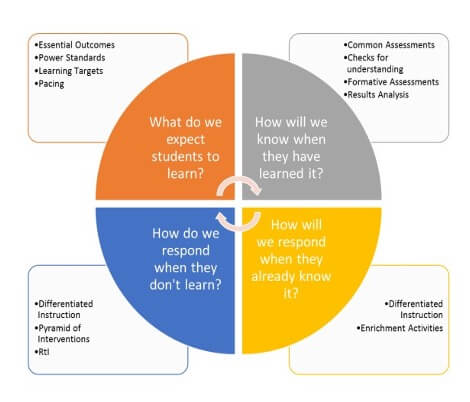
School timetables, academic gatherings, instructor assignments, financial arrangements, construction space planning, subject matter groupings, educational materials, and even course contents are all influenced by structural decisions. The structural framework is defined as “policies and processes, roles and duties, and time and space use that express the politics and address the vision.” The claim that “high performing (educational) systems indicate that the quality of an educational system depends on the quality of its teachers” has been made despite the fact that this claim is unfounded.
The reputation of the teaching staff is significantly correlated with the assessed standards of teaching and upskilling, as per the Mckinsey Study (2017), and teacher training is a focus in the highest learning environments.
PLCs are used as a method of professional development for teachers and school administrators in VVOB programmes from 2017 to 2021. VVOB works with Ecuador’s Ministry of Education to offer high-quality continuing professional development opportunities. The creation of secure educational facilities and improving students’ productivity should be the main goals of professional development for educators. VVOB supports the PLCs of school leaders in accomplishing this objective. The prospect of expanding the emphasis of PLCs for teachers to collaborate that cover pedagogical capabilities in addition to technical competencies is being looked at by VVOB as well as the Department of Education. After finding effective guides and creating a curriculum for them, PLCs are institutionalised in the Ecuadorian educational system.
The VVOB programme 2-year works with the Ministries of Basic, Intermediate, and Graduate Schools and Technological and Professional Education in two provinces of Kongo to help school administrators in enhancing agricultural and technical education.. (vwg, n.d.) The program’s goal is to make agricultural school classroom methods more active and participatory, with a focus on gender, the environment, and equity (Warwas & Hem, 2018, #). The initiative improves the ability of state testing services and departments to offer agriculture school administrators and instructors high-quality career development. Helping them create and facilitate learning networks of prototype agricultural and farming is a crucial part of the process. VVOB uses seminars, exchange trips, mentorship, and cooperative learning to train regional investigators.
Propositions:
Improved technical schooling should not be viewed as a panacea to fulfilling the demands of globalisation. States’ ability to gain from globalisation will be determined by two key factors. The first concerns how each nation responds to the challenges of globalisation at the federal level; the second concerns how they work together to create international rules and procedures for a somewhat free trade network.
Market growth, the interconnection of global economies, worldwide operations, worker flexibility, and a worldwide market are further strategies that will assist people and countries in gaining from the advantages of globalisation. (Warwas & Hem, 2018, #)The creation and management of a global organisation require the creation and management of individuals who are able to think, organize, and operate from a global viewpoint. These persons must possess both a global mentality and an international set of skills. All of this culminates in a disciplined professional platform made around an appropriate vocational course curriculum design. (Weigel et al., 2007, 223-233)
Systems of vocational education and training are crucial components of nations’ economic progress. To achieve or sustain economic competitiveness, especially in the context of advancing globalisation, it is critical to enhance the experience and competencies of the workforce. As a result, the importance of vocational education and training is recognised as being crucial to economic growth. As a consequence, organisations must change how they teach their staff. Additionally, TVET needs to be changed in order to increase the supply of skills and meet the requirement for skills. Only if TVET programmes are introduced in line with an appropriate specialisation will these advances be successful.
The acquisition of professional knowledge and skills that facilitate the transition from concept to implementation is often facilitated by the curriculum. The following are some clear advantages of a vocational curriculum: It allows students to totally focus on the job training and has the important advantage of being flexible. It offers instruction for many different occupations that need technical expertise instead of theoretical learning.
According to UNESCO (2009), curriculum development is a collection of methods aimed at bringing intentional alterations to get better results. A curriculum is the structuring of learning sequences with the purpose of establishing specific, purposeful learning outcomes. To achieve a more successful outcome, it is recognised as a regular practice to develop two separate curricula. For the working labour, a “transience” curriculum is suggested. Significant curricular changes are presently being made in several areas as the rapid change has escalated in recent years at an unheard-of rate.
Over the past 20 years, the economy of several nations has undergone significant change. The most crucial traits are changes in technology, global market competitiveness, and population trends. (Winch, 2007, 12-19)s. These developments have increased the need for a workforce that is more flexible, cross, and innovative. The gap between academic and professional schooling must be closed, and cooperation among educational institutions, union workers, with businesses must grow if these goals are to be met.
Discussion:
The level of education provided by an organisation serves as a road map for economic development. If teachers improve their skill set in response to the latest issues they face and improve their level by embracing new technology, skilled people will enter the labour force. This results in highly skilled personnel entering the corporate sphere, which maximizes output and hence supports economic progress.
Another rationale for the importance of vocational education is that it is a natural result of growing democratic societies intent on integrating and socialising new citizens (Zakirova & Koletvinova, 2018, 77-82). Unrestricted immigration and a growing secondary student population (usually from working-class backgrounds) as a result of the extension of mandatory education legislation are the main motivating factors in this “integrationist” worldview. In this context, practical training is seen as a way to upskill and integrate young people from working-class families and recent immigrants into the workforce while upholding real ethical commitments to equal education opportunities.
We must unquestionably enhance professional education and training instruction based on lesson planning with unique features if we are to comply with the international market standards and procedures and address globalisation challenges. The “modernization” of Career technical Development and Skills programmes which are based on the latest curricula established as a consequence of market analysis must be advocated by policymakers, educators, and educational researchers. (Weigel et al., 2007, 55-67).
In her study of three high-achieving nations, Europe, Malaysia, and South Korea, Darling-Hammond highlights skilful development in the form of continuing support for instructor education as being one of the approaches in use by powerful “teaching and learning systems” to maintain optimal learning outcomes. (Pambudi et al., 2020, 88-94). The need to improve teacher proficiencies through efficient continuing education regulations becomes more and more obvious as governments from around international attempt to change their educational systems. The value of professional development will increase once universal access to high levels of education is considered a public good. (Pambudi et al., 2020, 116-118)
A PLC’s behavioural dimension, known as collaborative development, describes how its members cooperate to enhance instructional procedures. In order to generate a growing body of standard instructional practises and methodologies, instructors not only sometimes exchange educational content but also jointly construct and regularly execute educational modules. (Maria Bliuc et al., 2012, 223-227). Furthermore, PLC members engage in acts of continual collective inquiry (Le Cornu, 2008, 12), fostering teacher development proceduresThese initiatives frequently involve deliberate conversation about issues in education. (Weigel et al., 2007, 44-67); (Maria Bliuc et al., 2012, 67-88), Nevertheless, they can also involve cross-examination and consultation, coaching, or collaborative assessment of the methods and results of education.
Since coordinated actions must fulfil shared aims and be tightly linked with accepted standards of behaviour in order to be successful and survive over time, the normative agreement explains the ideational aspect of a PLC. Because of this, PLC instructors have a shared set of academic goals and values, and they are completely in agreement with one other’s opinions of what constitutes good learning for students.
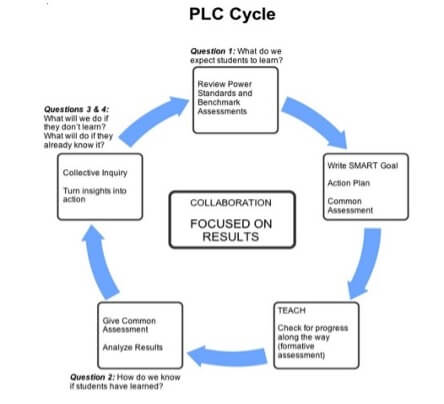
Constructive infrastructures illustrate the structural element of a PLC since large pair work necessitates principal components that enable and promote them. (Maria Bliuc et al., 2012, ). A division’s “organizational capability” (Mitchell & Sackney, 2007, p. 630; Sleegers et al., 2013, p.7) may incorporate several factors, but a few stand out in the literature. To begin,
operational routines and project workflows must be well-coordinated, which necessitates clear rules, procedures, and responsibilities; enough information supply; and quick and transparent communication channels. Second, adequate time and space should be allocated to meet and work in teams.
International benchmarking assessments like the Programme for International Student Assessment have recognised East Asian civilizations like Singapore and Shanghai recognize its pupils’ exceptional performance.. Contextual elements or frames that influence the overall performance of schooling are among the reasons for their academic success. Professional Learning Communities (PLCs) are an essential venue for school-based professional development.
A framework, in the words of Bolman, is a cognitive blueprint or a collection of ideas or presumptions that a person carries around in order to comprehend and control a certain “territory.” Multi-frame thinking, according to Hargreaves, creates not only a variety of viewpoints but also connections and dependencies among them. The frames highlight “neglected or hidden questions about school improvement and educational change, as well as supporting the placement of more typical questions in a new context.” The phrase “rules and processes, roles and duties, and uses of time and space that embody the politics and address the vision” is used to describe the formwork. (Maria Bliuc et al., 2012, #)
Structural choices have an impact on everything from school schedules to student societies to instructor-assigned tasks to budgets, facility designs, subject matter groupings, teaching materials, and even teaching content. While it has been argued that “high performing (education) systems illustrate that the quality of an education system depends on the quality of its instructors” (McKinsey & Company, 2007, p. 23). The McKinsey Report (2007) notes that professional learning is a focus in the best learning environments and that the public perception of the education sector is closely related to the degree of learning and skills that are deemed to be required. (Mouzakitis, 2010, 115-118).
Conclusion
The need to improve teacher preparedness via efficient professional development provisions emerges precisely clear as governments throughout the world attempt to alter their school systems. The importance of professional development will increase once universal access to a decent education is considered the most common good (Darling-Hammond, 2012).
Effective professional development strategies must be used, nevertheless, in order to link professional development with improvements in teaching practises and child results.
Darling-Hammond et al. make a number of claims based on their examination of the literature. First and foremost, exercise, continuous, and rigorous professional growth is required. They cherish sporadic possibilities for professional growth, such as seminars on certain subjects.
Professional development becomes impactful once it identifies the particular day-to-day education and learning barriers relevant to the subject, which involves understanding from role models, interacting in “hands-on” work, being aware of framework, characterising precisely which conceptual frameworks and abilities students are to acquire, identifying concepts and abilities that educators find difficult to understand, evaluating educators’ performance reports, identifying educators’ typical mistakes and misunderstandings. Teachers are driven by their pupils’ learning at the centre of all of this. (Kassab Shdaifat & Al-Huson, 2020, 78)

Student development is linked with a quality education that an individual possesses which in turn is linked with how well a teacher is able to cater for challenges in view of the latest innovations to make her students excel in the industrial sector. This is a loop that goes on and is a sort of theoretical framework. (DISTRICT 99, 2017, #)

Vocational Education leads to producing highly skilled individuals entering the labour force. When teachers being part of PLS train their students according to the latest domains, they are reducing costs that a firm had to make in order to have desired output. Thus, teachers when trying to upgrade themselves with time, they are not only allowing their students to excel in regard to the latest era but also playing a significant role in economic development.
Career development focus areas have to be in line with those of education reform. Professional development is more successful, according to Darling-Hammond et al., if it is a crucial component of the overall endeavour to improve schools. This is done to avoid or lessen the apparent discrepancy between what instructors do during professional development activities and how they are expected to deliver in accordance with the narrative of the education curriculum, such as rules, manuals, and evaluation. (Sameer Aowad Kassab Shdaifat1 & Al-Huson, 2020, 23-56).
Future research can be done to check whether PLCs are able to tackle the inequality standards that exist in the form of a difference in pay range between developed and underdeveloped countries where cheap labour fosters economic inequality, as past literature shows that PLCs are strongly linked with economic development.
References
DISTRICT 99, C. (Ed.). (2017). Professional Learning Community. PLC handbook, 5, 97.
Kassab Shdaifat, S. A., & Al-Huson. (2020). The Future Role of Vocational Education Teachers in the Professional Learning Communities in Public Schools from the Perspective of Principals and Academic Supervisors in Jordan. International Journal of Higher Education, 9.
Aaron Benavot. (1983). The Rise and Decline of Vocational Education. American Sociological Association, Vol. 56, 63-76.
Bolam, R., Agnes McMahon, A., Stoll, L. S., Thomas, S., & Wallace, M. (2005). Creating and Sustaining Effective Professional Learning. University of Bristol.
Holmes, B. (2013). School Teachers’ Continuous Professional Development in an Online Learning Community: lessons from a case study of an eTwinning Learning Event. European Journal of Education, 48, 95. Le Cornu, R. (2008). Reconceptualising professional experiences in preservice teacher educationyreconstructing the past to embrace the future. ELSEVIER.
Maria Bliuc, A.-., Grant Casey, G., Agnieszka Bachfischer, A., Peter Goodyear, P., & A. Ellis, R. (2012). Blended learning in vocational education: teachers’ conceptions of blended learning and their approaches to teaching and design. The Australian Association for Research in Education. Moodie, G. (2006). Identifying vocational education and training. Journal of Vocational Education and Training.
Morris,, R., Simons, M., ward, P., & Delahaye, B. (2003). Changing roles for vocational education and training teachers and trainers. Australian National Training Authority.
Mouzakitis, G. S. (2010). The role of vocational education and training curricula in economic development. ELSEVIER.
Pambudi, N. A., Budi Harjanto, B., & Suharno. (2020). Children and Youth Services Review. elsevier, 115.
Salleh, H. (2015). eveloping Teachers through Professional Learning
Communities in Singapore and Shanghai. Science Education in East Asia: Pedagogical Innovations and Research-informed Practices, 407-424.
Sameer Aowad Kassab Shdaifat1, S. A., & Al-Huson. (2020). The Future Role of Vocational Education Teachers in the Professional Learning
Communities in Public Schools from the Perspective of Principals and Academic Supervisors in Jordan. International Journal of Higher Education, 9, 5.
Sturko, P. A., & GregsonA, J. (2008). Learning and Collaboration in Professional Development for Career and Technical Education Teachers: A Qualitative Multi-Case Study. Journal of STEM Teacher Education, 45(3).
Sue Kilpatrick, S., Barrett, M., & Jones, T. (2003). Defining Learning Communities Contact: Defining Learning Communities. CRLRA Discussion Paper Series ISSN 1440-480X.
V. O. Uwaifo, V. O., & I. U. Uwaifo, I. U. (2009). Training technology and vocational education teachers for the new 9-3-4 education system in Nigeria: Its problems and prospects. International NGO Journal, 4. vwg, V. (n.d.). VVOB | education for development. Retrieved June 23, 2022, from https://www.vvob.org/
Warwas, J., & Hem, C. (2018). Professional learning communities among vocational school teachers: Profiles and relations with instructional quality. elsevier, 73(2018), 43-55.
Weigel, T., Mulder, M., & Collins, K. (2007). The concept of competence in the development of vocational education and training in selected EU member states. ournal of Vocational Education & Training.
Winch, C. (2007). Vocational Education (L. Clarke, Ed.).
Zakirova, V. G., & Koletvinova, N. D. (2014). Paradigm of future primary school teachers’ vocational training. Life Science Journal.
